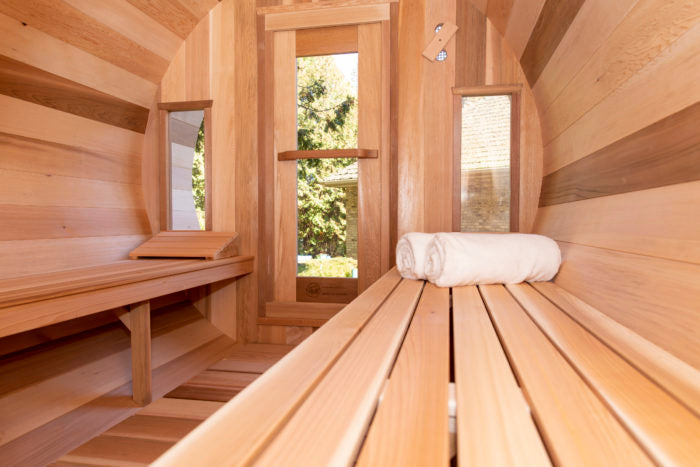Facts About Traditional Sauna Revealed
Facts About Traditional Sauna Revealed
Blog Article
What Does Traditional Sauna Mean?
Table of ContentsA Biased View of Traditional SaunaThe Definitive Guide to Traditional SaunaThe Traditional Sauna IdeasTraditional Sauna Can Be Fun For EveryoneSome Of Traditional Sauna
The majority of the weight shed in a sauna is water loss and is re-gained upon rehydrating. However, certainly sauna can be a vital part of a healthy fat burning program. To check out the differences between typical and IR saunas, I will separate these right into verifiable, theoretical, and fabricated distinctions.Therefore, the hottest factor in the saunawhich is at the ceiling straight above the sauna heateris usually between 185 and 190 F. Claims that a typical sauna surpasses 200 F is simply not real and not appropriate for electrical saunas marketed in the United States. The temperature for a far-infrared sauna is generally set between 120 and 140 F; nonetheless, unlike the conventional sauna, the objective in and IR area is not to attain a heat.
As a result of this, the temperature level difference is nearly pointless, considering that excessive sweating results in both sauna kinds, however the method of heating up the body is various. In an IR sauna the bather will certainly really feel warm and will certainly sweat profusely, yet at much lower temperature levels (Traditional Sauna). Thus, if the goal is to invest longer durations of time in the sauna, the IR sauna is a good option
When a conventional sauna has actually been effectively heated, the sauna wall surfaces are cozy, the air temperature level has accomplished established temperature level and the rocks are super heated. As a fascinating side note, the warmed wall surfaces and the rocks are discharging far-infrared heat, combined with the heated air, to produce an "wrapping up warmth".
Little Known Questions About Traditional Sauna.

When the heat is achieved, the components cycle on and off to keep the high temperature level. A lot of conventional sauna users enjoy putting water over the rocks to produce heavy steam to raise sauna moisture levels. The benefits of putting water over the rocks include: making the room extra comfy, moistening the nasal flows, and permitting the use of aromatherapy by blending crucial oils with the water.

When the energy goes into the body, it causes the body temperature to raise and eventually results in sweat. In an infrared sauna it's essential for the emitters/heaters to continue to be on virtually constantly. Considering that there is no mass of rocks to retain warm, the sauna will certainly cool if useful source the emitters shut down.
As mentioned above, the sauna bather in an infrared area wishes to place himself in front content of operating emitters to obtain maximum benefit from the warm. The home heating time for both spaces can be very different, relying on just how the spaces are made use of. For a traditional sauna, a bather must permit 30-40 minutes for the room to accomplish a wanted temperature level and to appropriately pre-heat the rocks.
Some Known Questions About Traditional Sauna.
A well created sauna will typically accomplish a temperature of 150-160 F in concerning 30-40 minutes. For hotter temperature levels, the room might require to heat for a longer period.

Traditional saunas often tend to be larger (therefore use even more electricity) than infrared saunas, although standard saunas are definitely available in one and 2 person sizes. For a two-person typical sauna, 5x6 or 5x7 size is most prominent. The leading bench can easily seat 2 or three individuals and is also enough time to relax during the sauna session.
6 Easy Facts About Traditional Sauna Explained
The average expense per kWH of power in the united state is approximately $0.11, so a 4.5 kW heating unit will certainly set you back approximately $.50 to run for one hour, if the heater runs constantly for one hour. Generally a sauna heating unit will certainly compete 75% of the initial hour and 50% of succeeding hours on since the aspects cycle once the set temperature level is attained.

Finally, there is a hardly ever reviewed difference in the social experience in between both areas. While our society has shed several of click for more the social benefit of the traditional sauna experience, it can be very socially rewarding (Traditional Sauna). From family members time in the sauna, to heart-felt discussions with considerable others, to sauna partiesthe conventional sauna experience can lead to intimate mingling
Our Traditional Sauna Ideas
Many greater end infrared rooms include tinted light therapy, noise systems and full-glass fronts.
Report this page